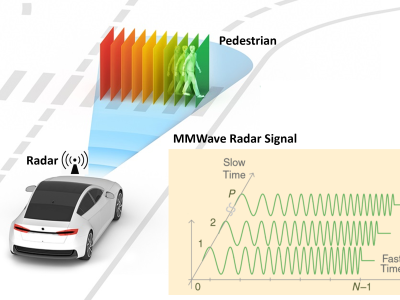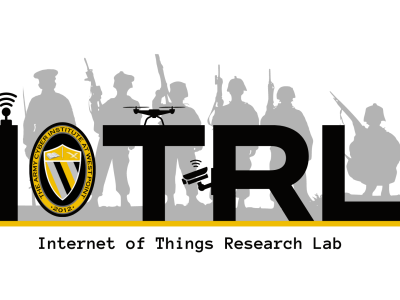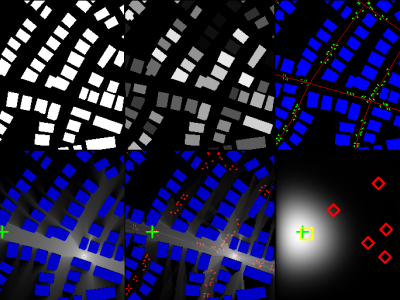CRAWDAD cu/wimax

- Citation Author(s):
-
Michael Ton (University of Colorado)Caleb Phillips
- Submitted by:
- CRAWDAD Team
- Last updated:
- DOI:
- 10.15783/C7BC76
 112 views
112 views
- Categories:
Abstract
WiMax measurements made with a portable spectrum analyzer on the University of Colorado campus.
This data was collected at the University of Colorado Boulder. It contains careful point measurements of the WiMax network serving the University of Colorado campus. Measurements were made with a portable spectrum analyzer and contain high fidelity measurements of CINR, RSS, EVM, RCE, Spectrum Flatness, and Frequency Shift. Several hundred measurements were taken on a 100m equalateral triangular lattice as a "first phase" sample. Additional "second phase" measurements were taken at random and optimized points.
date/time of measurement start: 2011-05-01
date/time of measurement end: 2011-05-01
collection environment: This data was collected at the campus of University of Colorado, Boulder, USA.
network configuration: All measurements were done "passively", without any greater access to the WiMax network than a typical client device would have. Five distinct Base stations (BSs) were measured operating in an educational license at 2.5 GHz:
Name,Orientation,Frequency,BSID,Lng,Lat,Easting,Northing,AGL(m),Channel "Gamow_West",235,2530,"000000:000101",-105.267778,40.008056,2017383.55491878,4582293.92520922,46,116 "Gamow_East",90,2520,"000000:000102",-105.267778,40.008056,2017383.55491878,4582293.92520922,46,76 "Eng_East",120,2530,"000000:000002",-105.263056,40.007222,2017808.74220088,4582284.16821699,34,116 "Eng_West",240,2510,"000000:000001",-105.263333,40.007222,2017784.9247938,4582279.26962773,34,36 "Eng_North_GENI",0,2578,"4451DB:000701",-105.263333,40.007222,2017784.9247938,4582279.26962773,34,308 Lat/Lng are given in EPSG:4326 and Easting/Northing in EPSG:32160. The BSs on channels 36, 76, and 116 are identical, installed by Airspan and maintained by the University of Colorado IT Services. They each have a 90 degree sector pointed in the azimuthal orientation indicated. The fifth BS is an experimental GENI WiMax ("http://groups.geni.net/geni/wiki/WIMXUCO") node, using NEC hardware and maintained by researchers in the University of Colorado Computer Science Systems Laboratory.
data collection methodology: Data collection was performed an Anritsu MS2721B portable spectrum analyzer, which was controlled over a National Instruments VISA interface using a Linux netbook computer and an Ethernet interface. The included source "measure.c" is the NI/VISA code that was used to collect each measurement point. The measurement devices were attached to a bicycle/hand cart. At each point, a GPS reading was taken from a hand-held Garmin GPS60 (the GPS on the Anritsu was not usable). The data contains measurements from 4 distinct campaigns: A: A 100m triangular lattice grid sample of the main CU campus, focusing on channel 76 only B: A 100m triangular lattice grid sample of the main CU campus, on the remaining channels C: Uniform random second-phase sample, focusing on channel 308 only D: Optimized second-phase samples, focusing on channel 308 only.
sanitization: The data has not been sanitized or censored in any way.
Traceset
cu/wimax/samples
WiMax measurements made with a portable spectrum analyzer on the University of Colorado campus.
- file:wimax_crawdad.zip
- description: This data was collected at the University of Colorado Boulder. It contains careful point measurements of the WiMax network serving the University of Colorado campus. Measurements were made with a portable spectrum analyzer and contain high fidelity measurements of CINR, RSS, EVM, RCE, Spectrum Flatness, and Frequency Shift. Several hundred measurements were taken on a 100m equalateral triangular lattice as a "first phase" sample. Additional "second phase" measurements were taken at random and optimized points.
- measurement purpose: Network Diagnosis, Bit Error Characterization, Educational Use, Network Performance Analysis
- methodology: The data collection procedure is as follows:
1. Locate a point to measure using the map. Try to get as close to the actual point as possible. If it is on/in a building or other obstacle, go to the nearest accessible outdoor location and do the measurement there instead. If the point is totally unreachable (i.e. closest point is 100m away), then circle the point and move on.
2. Write down the ID of the point being measured (i.e., 12 4 0) for the 0th measurement at point 12 4.
3. Using the handheld GPS device, write down the current location and accuracy of the GPS position.
4. Run the measurement script on the control computer, wait for it to finish. It will make 3 complete measurements on each channel being studied.
5. Mark off the location just measured on the map with an X.
At each point, the measurement script records a full constellation plot, WiMax demodulation summary, and spectrum flatness plot. These are stored on the unit and transferred off later. They are stored in a proprietary, but easy-to-parse format with the suffix .wmxe (or .stp). The directory "data" contains these measurement files. The file index.txt contains a list of all the measurements. Each line in the measurement file contains an ID like YYYYMMDDHHMMSS, which refers to a file in the directory "log". The corresponding log file lists which measurements were made and gives the IDs for those.
cu/wimax Trace
samples/2012: WiMax measurements made with a portable spectrum analyzer on the University of Colorado campus. This data was collected at the University of Colorado Boulder. It contains careful point measurements of the WiMax network serving the University of Colorado campus. Measurements were made with a portable spectrum analyzer and contain high fidelity measurements of CINR, RSS, EVM, RCE, Spectrum Flatness, and Frequency Shift. Several hundred measurements were taken on a 100m equalateral triangular lattice as a "first phase" sample. Additional "second phase" measurements were taken at random and optimized points.
- configuration: Data collection was performed an Anritsu MS2721B portable spectrum analyzer, which was controlled over a National Instruments VISA interface using a Linux netbook computer and an Ethernet interface. The included source "measure.c" is the NI/VISA code that was used to collect each measurement point. The measurement devices were attached to a bicycle/hand cart. At each point, a GPS reading was taken from a hand-held Garmin GPS60 (the GPS on the Anritsu was not usable).
- format: At each point, the measurement script records a full constellation plot, WiMax demodulation summary, and spectrum flatness plot. These are stored on the unit and transferred off later. They are stored in a proprietary, but easy-to-parse format with the suffix .wmxe (or .stp). The directory "data" contains these measurement files. The file index.txt contains a list of all the measurements. Each line in the measurement file contains an ID like YYYYMMDDHHMMSS which refers to a file in the directory "log". The corresponding log file lists which measurements were made and gives the IDs for those.
Instructions:
The files in this directory are a CRAWDAD dataset hosted by IEEE DataPort.
About CRAWDAD: the Community Resource for Archiving Wireless Data At Dartmouth is a data resource for the research community interested in wireless networks and mobile computing.
CRAWDAD was founded at Dartmouth College in 2004, led by Tristan Henderson, David Kotz, and Chris McDonald. CRAWDAD datasets are hosted by IEEE DataPort as of November 2022.
Note: Please use the Data in an ethical and responsible way with the aim of doing no harm to any person or entity for the benefit of society at large. Please respect the privacy of any human subjects whose wireless-network activity is captured by the Data and comply with all applicable laws, including without limitation such applicable laws pertaining to the protection of personal information, security of data, and data breaches. Please do not apply, adapt or develop algorithms for the extraction of the true identity of users and other information of a personal nature, which might constitute personally identifiable information or protected health information under any such applicable laws. Do not publish or otherwise disclose to any other person or entity any information that constitutes personally identifiable information or protected health information under any such applicable laws derived from the Data through manual or automated techniques.
Please acknowledge the source of the Data in any publications or presentations reporting use of this Data.
Citation:
Michael Ton, Caleb Phillips, cu/wimax, https://doi.org/10.15783/C7BC76 , Date: 20120601
















